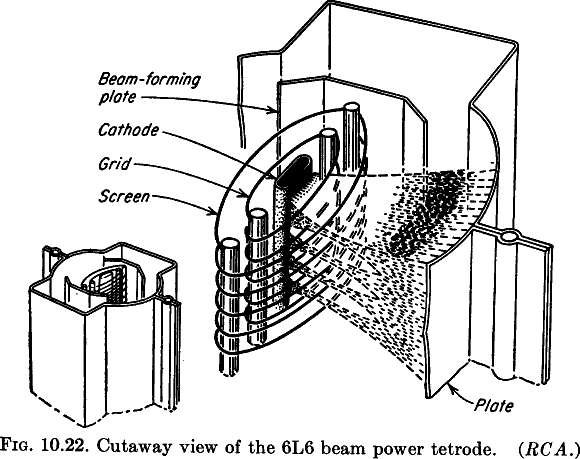One of the things we look at at the Valve Heaven Amp School is explaining how a valve (also known as a vacuum tube) works.
Gaining a basic understanding of the inner workings of a valve is very helpful for a guitarist. The operation of a valve is at the centre of how an amplifier works, and getting to know how a valve works helps you to get the best out of your amp!
Here are some images of different valve types: 
You may have seen these glass and metal marvels inside your amp. But how do they work?
If you look at a valve in operation, you will see a reddish/orange glow inside the valve. This is the dull red cathode which is heated to a high temperature causing electrons to be released from the surface of the cathode. These electrons form a “cloud” around the cathode. The second element that can be easily seen inside a valve is the metal cylinder or box structure called the anode (or plate if you live in the US). This metal anode is connected in your amp to a source of positive high voltage, and this anode being at a positive potential attracts the negatively charged electrons around the cathode towards it. But there is a third element inside the valve that makes a valve such a powerful device – the grid. Wound in a spiral around the cathode, the grid acts to control the flow of electrons between the cathode and the anode. It operates like a tap in your kitchen – turn the tap off, and there is no water flowing – open up the tap and more and more water flows.
This image clearly shows the internal workings of a valve:
 You can see the heated cathode which emits electrons. These electrons are attracted to the positive anode (or plate). But between the cathode and the anode is the grid (in this diagram of a power valve, there is a second grid, but we will come to that in a later tutorial), and the voltage applied to the grid controls the flow of these electrons. But even more importantly, a small change in voltage at the grid causes a greater change in electron flow meaning that the valve becomes an “amplifying” device. This capacity to amplify or increase the signal makes the valve a powerful device, able to amplify the signal from your guitar and drive power into your speaker.
You can see the heated cathode which emits electrons. These electrons are attracted to the positive anode (or plate). But between the cathode and the anode is the grid (in this diagram of a power valve, there is a second grid, but we will come to that in a later tutorial), and the voltage applied to the grid controls the flow of these electrons. But even more importantly, a small change in voltage at the grid causes a greater change in electron flow meaning that the valve becomes an “amplifying” device. This capacity to amplify or increase the signal makes the valve a powerful device, able to amplify the signal from your guitar and drive power into your speaker.
That’s it for now – Part 2 of this series will look at different types of valves, and how they operate in your amp. Feel free to ask any questions below – I’d love to hear from you!
